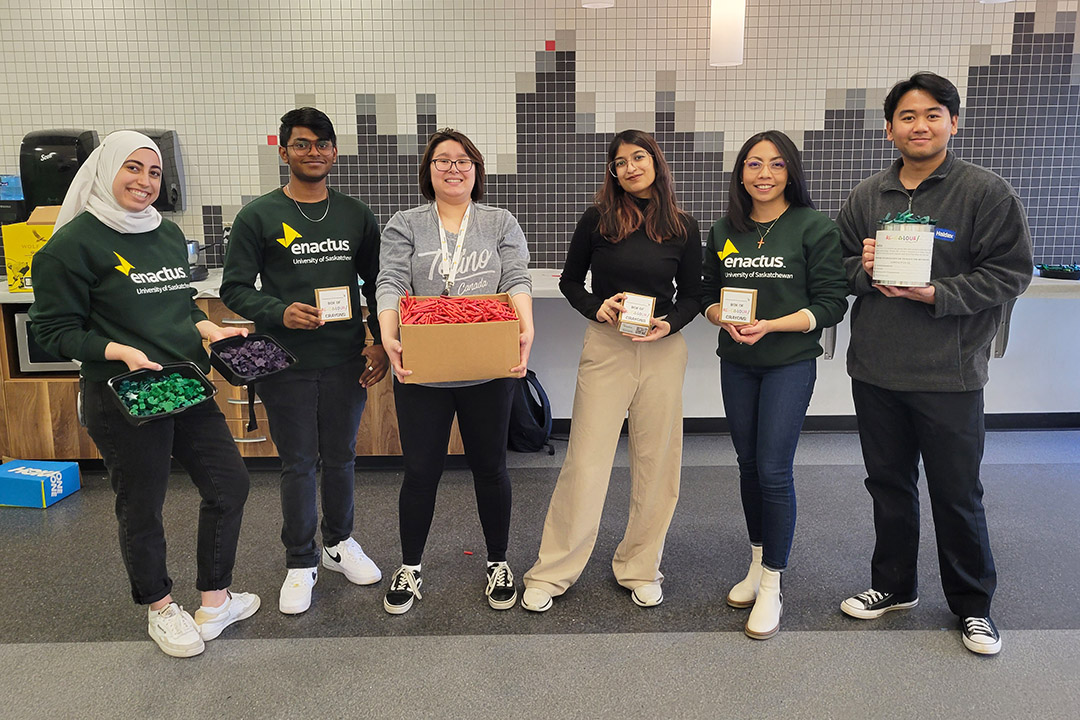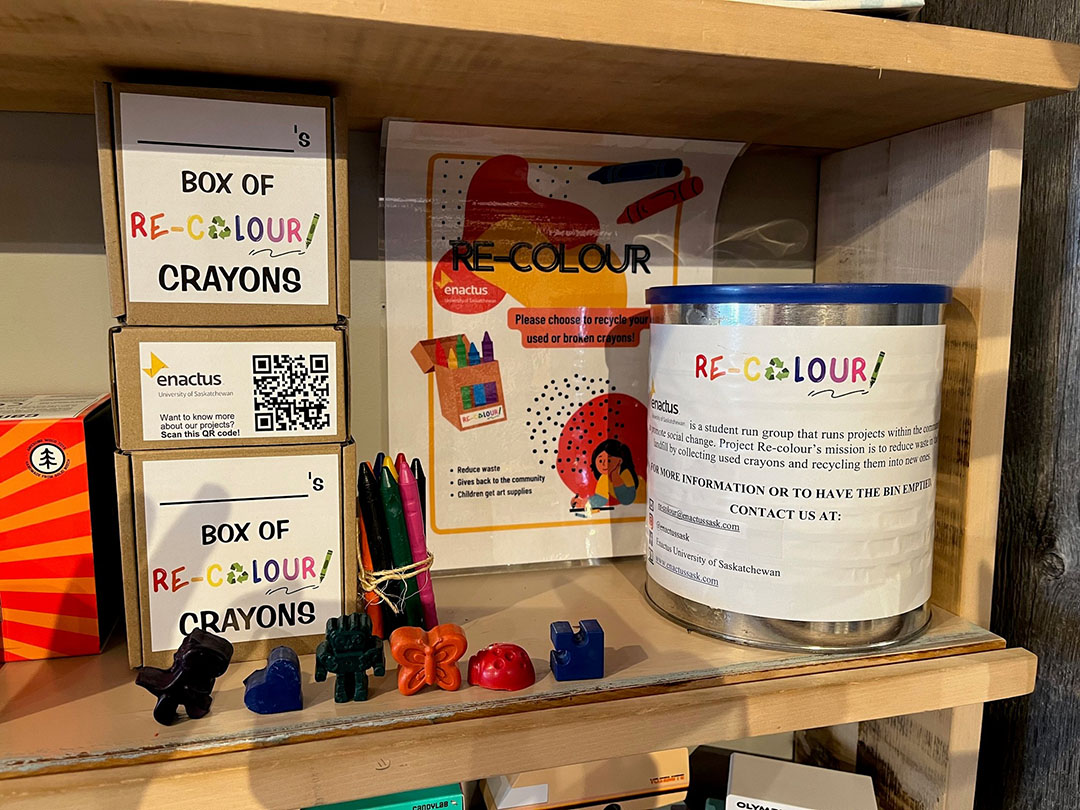
Enactus University of Saskatchewan Re-Colour project reduces waste and provides art supplies to children in need
If you have ever gone to a casual dining establishment with children in your party, chances are your table received crayons and paper for colouring. Crayons at restaurants are a favourite of parents looking to keep their kids occupied during mealtime.
By Natasha KatchukBut have you ever wondered what happens to the crayons if you don’t take them with you after the meal is done? If they weren’t in good condition after you went home, they likely ended up in the landfill.
That’s where students from Enactus University of Saskatchewan come into play.
“Enactus is an international non-profit organization dedicated to creating a better, more sustainable world,” said Enactus co-president Rebecca Keindel. “We seek to create positive solutions to environmental, social, and economic issues in our communities through entrepreneurial student leaders from all across USask.”
The campus group has been making headlines in Saskatoon for its solution to keep discarded and broken restaurant crayons out of landfills.
“Re-Colour is an initiative to re-purpose art supplies,” explained Keindel. “We give crayons a second life and donate Re-Colour kits to inner-city schools, daycares, and women and children crisis shelters in Saskatoon.”
The Re-Colour team featured students from across campus and was led by Project Manager Maahi Shah and supported by Edwards School of Business Assistant Professor Tyler Case.
“It is a relatively simple project with big impact,” said Case. “The Re-Colour project has also been a good lesson in upcycling, accounting, operations, philanthropy, branding, and retailing. I give the students credit for getting the project ‘across the finish line,’ which is very entrepreneurial.”
The innovative solution reduces waste through household donations and partnerships with restaurants like Montana’s. By collecting crayons that would be otherwise discarded, the team has diverted more than 11,500 crayons from landfills in Saskatoon.
The crayons are collected monthly and then the Enactus team meets for a production night on campus where the crayons are peeled, melted, and poured into moulds. The Re-Colour kits include a thicker crayons in a variety of colours and shapes like dinosaurs and hearts.
“Over 21 people have been involved in diverting over 127 pounds of plastic waste from landfills,” said Enactus co-president Huda Jasem.

After a year and a half of distributing the Re-Colour kits, they recently hit the shelves of The Better Good, a local retail store that sells eco-friendly and socially responsible products in Saskatoon. All proceeds from the sales are being reinvested into the project to donate more Re-Colour kits.
“The Enactus team has created over 2,000 repurposed crayons and donated the Re-Colour kits to three kindergarten classes, one crisis shelter and one daycare,” said Jasem.
Teaching the next generation ways to reduce, reuse, and recycle is also another one of the student group’s objectives.
In February, the Enactus team partnered with the Edwards School of Business and the Saskatchewan Industry Education Council for a Spotlight on Careers event for the business and finance sector.
The Enactus team guided more than 120 high school students in transforming donated crayons through the process of sorting, peeling, melting, moulding, and packaging.
“While donating the Re-Colour kits we educate youth and the general public on the importance of environmental intervention, to protect the earth we all inhabit,” said Shah.
The small-scale recycling effort is an excellent example of how innovative thinking can lead to positive change. The impacts of the Re-Colour project will be showcased at the Enactus Canada Regional Exposition - Western Canada, in Calgary this month.
For more information on the Enactus University of Saskatchewan Re-Colour project, please visit: https://www.enactussask.com/
